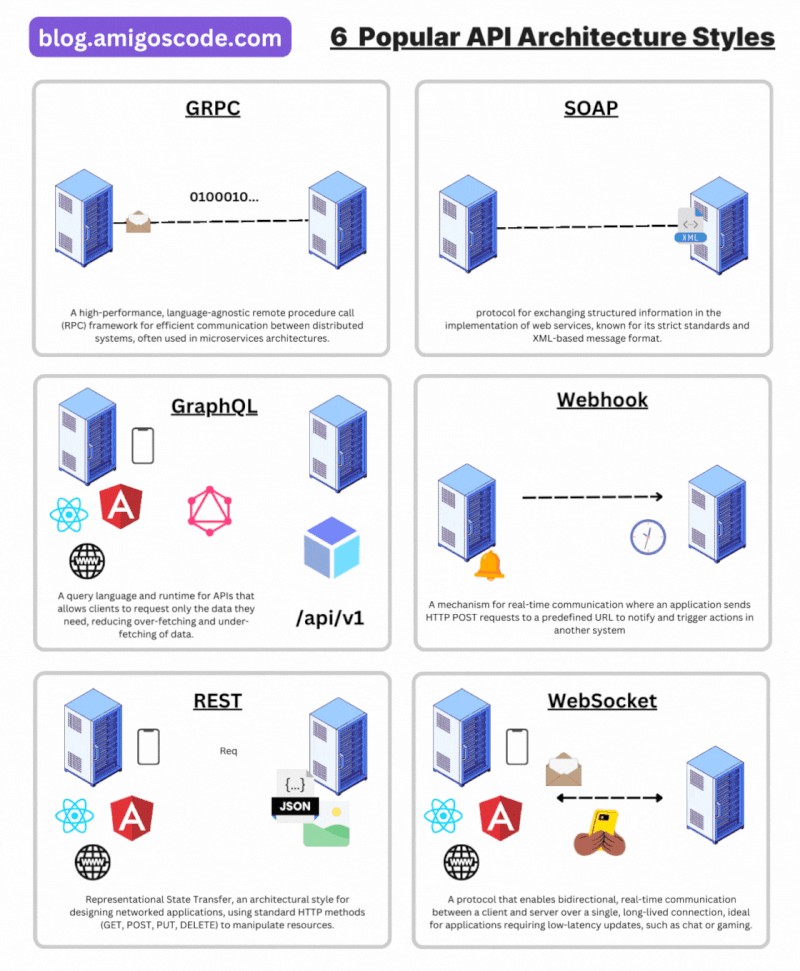1. gRPC
gRPC (gRPC Remote Procedure Calls) is a high-performance, open-source framework developed by Google that uses HTTP/2 for transport, Protocol Buffers as the interface description language, and provides features such as authentication, load balancing, and more.
🔎 Use Cases: Ideal for microservices, inter-service communication, and scenarios requiring high throughput and low latency.
2. SOAP (Simple Object Access Protocol)
SOAP is a protocol for exchanging structured information in the implementation of web services. It relies on XML and typically uses HTTP or SMTP for message transmission.
🔎 Use Cases: Often used in enterprise-level applications requiring high security, ACID-compliant transactions, and formal contracts (WSDL).
3. GraphQL
GraphQL is a query language for APIs and a runtime for executing those queries by using a type system. It allows clients to request exactly the data they need and nothing more.
🔎 Use Cases: Best for applications with complex data requirements and for scenarios where clients need flexibility in data retrieval.
4. Webhooks
Webhooks are user-defined HTTP callbacks that are triggered by specific events. When an event occurs, the source application makes an HTTP request to the URL configured for the webhook.
🔎 Use Cases: Commonly used for real-time notifications and integrations between different services, such as payment processing, version control systems, and CI/CD pipelines.
5. REST (Representational State Transfer)
REST is an architectural style that uses standard HTTP methods (GET, POST, PUT, DELETE) to interact with resources represented as URLs. It is stateless and has a uniform interface.
🔎 Use Cases: Widely used for web services and APIs due to its simplicity, scalability, and ease of integration with web technologies.
6. WebSocket
WebSocket is a communication protocol that provides full-duplex communication channels over a single TCP connection. It allows for real-time data transfer between a client and server.
🔎 Use Cases: Ideal for applications requiring real-time updates, such as chat applications, live notifications, online gaming, and collaborative tools.
🕯These API architecture styles cater to different needs and use cases, allowing developers to choose the most suitable approach for their applications.


